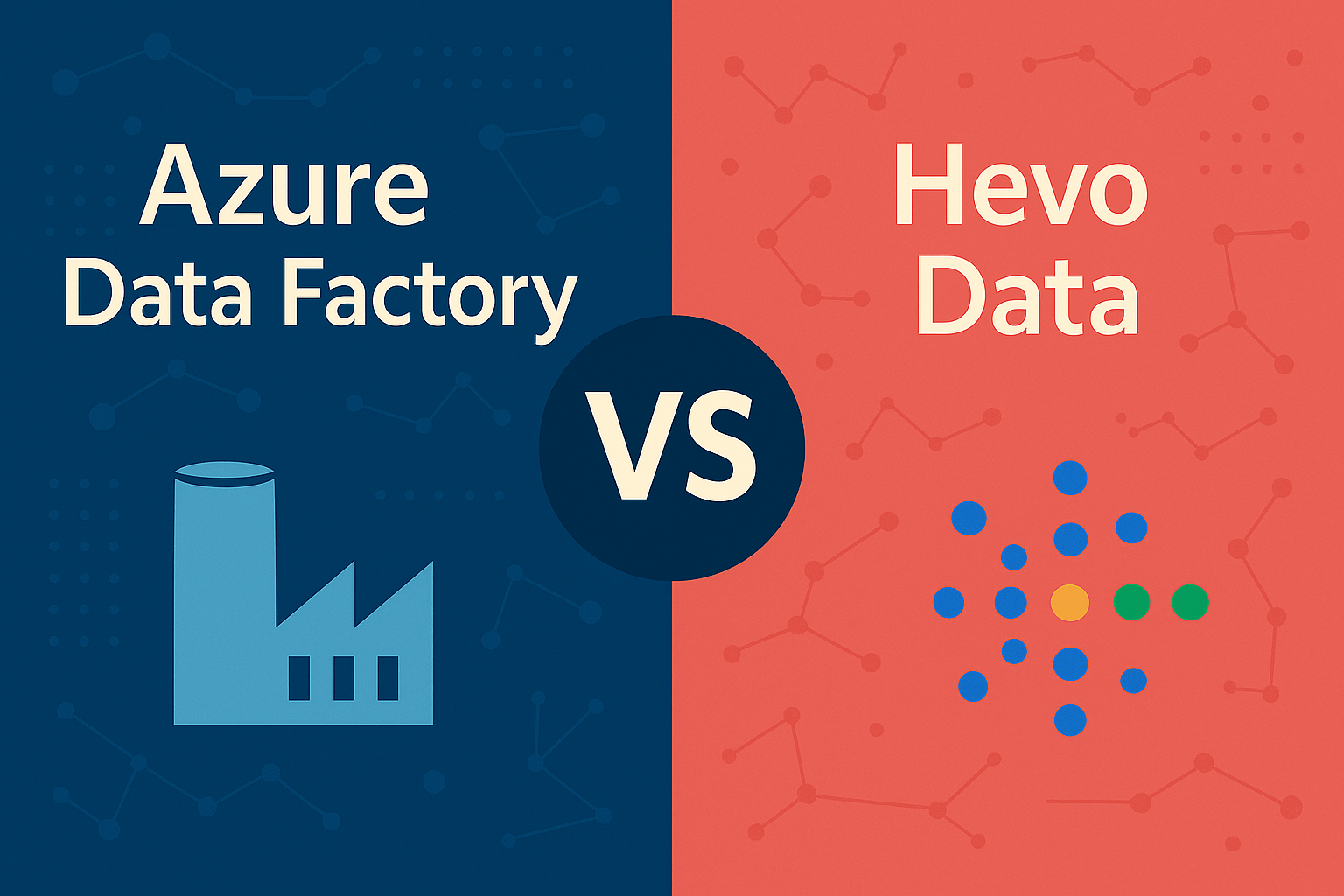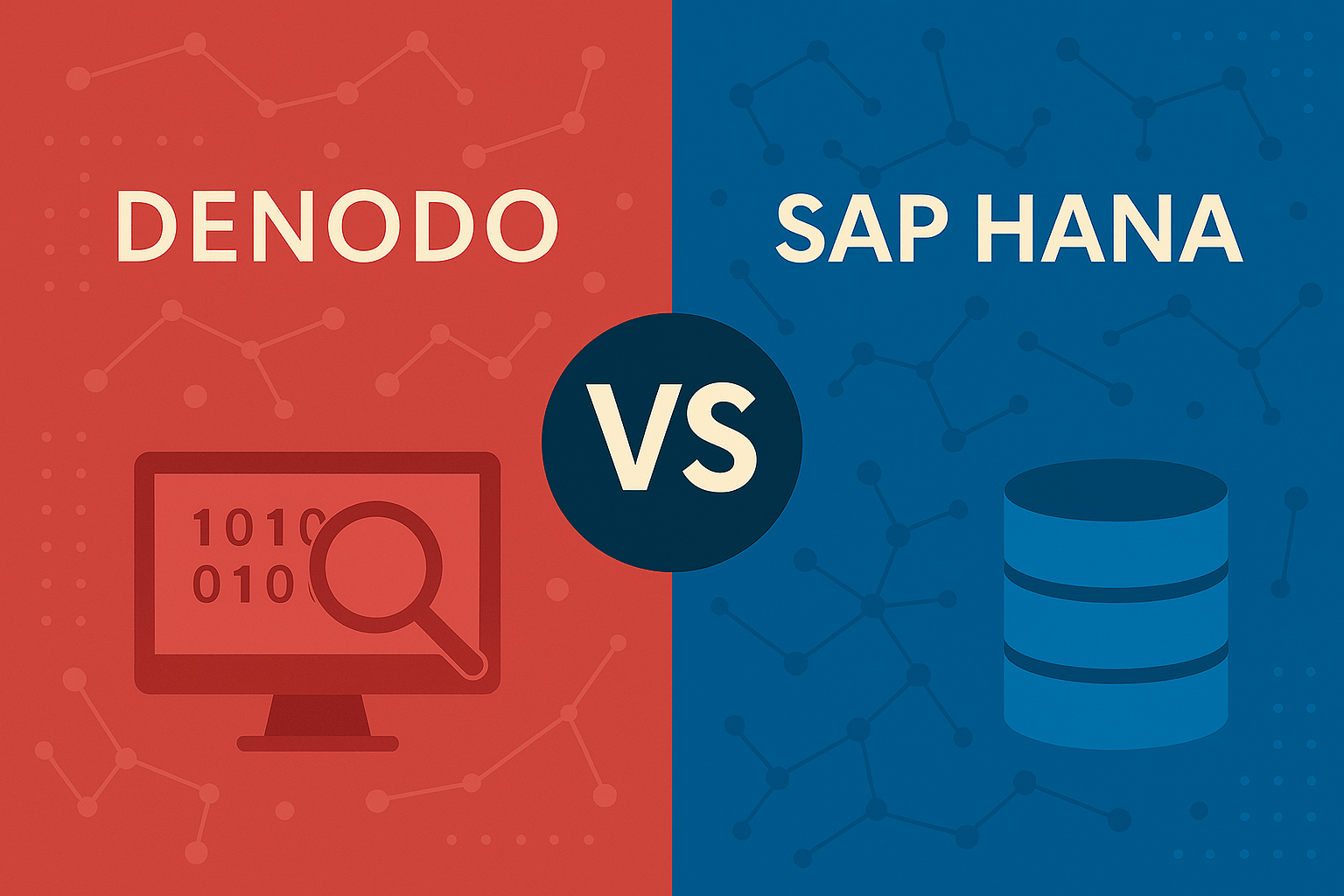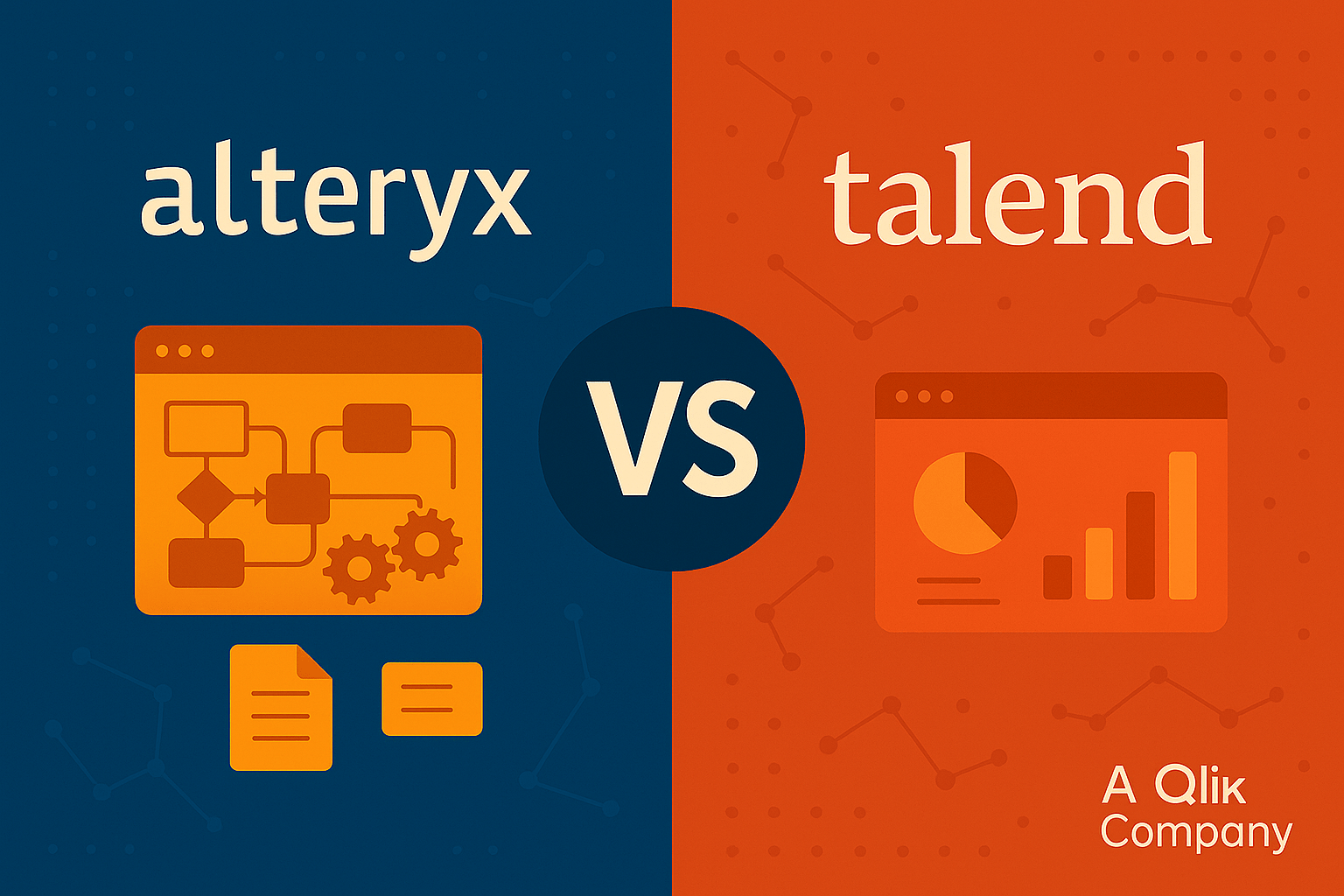Alteryx vs Informatica: Which Data Integration Tool is Right for You?
When your organization’s data strategy hangs in the balance, choosing between Alteryx vs Informatica becomes more than just a vendor selection—it’s a decision that will shape how your teams access, transform, and analyze data for years to come. Both platforms dominate the data integration landscape, yet they serve fundamentally different purposes and user bases.
The premise of Alteryx centers on empowering business users with self-service analytics through an intuitive interface, while Informatica is built on a foundation of enterprise-grade data management and scalable cloud integration, enabling robust and high-performance analytics workflows.
This comprehensive comparison will guide you through the critical differences between these two powerhouse platforms, helping you understand which solution aligns with your organization’s specific needs, technical requirements, and long-term data strategy.
Choose the Right Data Integration Solution
Alteryx and Informatica represent two distinct philosophies in the data integration world. While both platforms excel at moving and transforming data, their approaches couldn’t be more different.
Alteryx has carved out its niche as the go-to platform for self-service analytics, empowering business users and citizen data scientists to create sophisticated data workflows without requiring extensive programming knowledge. Its drag-and-drop interface and intuitive design make complex data preparation accessible to analysts who previously relied on IT teams for data transformation tasks.
Both Alteryx and Informatica have the potential to enable innovation and significantly improve analytics capabilities by harnessing modern frameworks and cloud-based analytics.
Informatica, on the other hand, stands as the enterprise-grade powerhouse built for IT professionals and data engineers who manage large-scale, mission-critical data operations. With its comprehensive ETL capabilities and robust governance features, Informatica handles the complex data integration challenges that come with managing data across hundreds of sources in global organizations. The platform is primarily aimed at IT professionals to build data pipelines, making it a less intuitive choice for business analysts.
Each platform supports a wide range of data sources and systems, offering broad integration capabilities that will be explored in detail in the following sections.
Understanding these fundamental differences is crucial because the right choice depends not just on your current needs, but on your organization’s data maturity, user base, and long-term growth trajectory.
What Makes These Platforms Unique?
Alteryx – Self-Service Analytics Excellence

Alteryx revolutionized data analytics by putting powerful data preparation and analysis capabilities directly into the hands of business users. The platform’s drag-and-drop interface eliminates the traditional barrier between business questions and data insights, allowing analysts to build sophisticated workflows without writing a single line of code.
The platform shines in rapid prototyping scenarios where business teams need to quickly test hypotheses or explore new data relationships. Marketing teams, for instance, can seamlessly blend internal CRM data with third-party demographic datasets to identify new sales opportunities—all within a single, intuitive workflow environment.
What sets Alteryx apart is its comprehensive suite of built-in analytics tools. In addition to data analytics, users can perform predictive modeling, spatial analysis, and statistical testing without switching between multiple applications. The platform includes over 300 pre-built tools and supports custom transformations through C++ and XML macros when advanced users need additional flexibility.
Alteryx’s desktop-first approach means users can work with their data locally before deploying workflows to Alteryx Server for collaboration and automation. This design philosophy reflects the platform’s commitment to empowering individual analysts while providing pathways for scaling successful analyses across the organization. Alteryx is a great product for organizations seeking a comprehensive analytics solution.
Informatica – Enterprise Data Integration Powerhouse

Informatica built its reputation by solving the most complex data integration challenges facing large enterprises. PowerCenter, the platform’s flagship ETL tool, can handle massive data volumes while maintaining the reliability and performance standards required for mission-critical operations.
Informatica supports on-premises deployments, enabling seamless integration of data sources within on-premises environments and local data warehouses. The platform’s architecture separates logic from execution, ensuring that data transformations remain portable across different environments—a crucial capability for organizations managing hybrid cloud deployments or planning migrations. Historically, Informatica has been an on-premises solution focused on preload transformations for data warehouses, ensuring data is optimized before it reaches its destination. This metadata-driven approach also enables sophisticated data lineage tracking, allowing organizations to trace every transformation applied to their data from source to destination, supporting end-to-end data transformation processes.
Informatica’s strength lies in its comprehensive suite of products and connectivity options, with over 100 native connectors supporting everything from legacy mainframe systems to modern cloud applications. The informatica connector toolkit enables custom integrations when standard connectors don’t meet specific requirements, ensuring that no data source remains inaccessible.
The platform excels in regulated industries where data governance isn’t optional but mandatory. Financial services firms rely on Informatica to consolidate risk data from hundreds of global sources while maintaining complete audit trails—a capability that proves invaluable during regulatory examinations and compliance reporting.
Alteryx vs Informatica: Key Differences Breakdown

Data Transformation Capabilities
|
Feature |
Alteryx |
Informatica |
|---|---|---|
|
Interface Type |
Visual, drag-and-drop workflow designer |
Mapping-based with transformation language |
|
Pre-built Tools |
300+ tools for data prep, analytics, and spatial analysis |
Comprehensive transformation library with advanced mapping |
|
Custom Logic |
C++/XML macros, R/Python integration |
Custom transformation language, Java transformations |
|
Performance |
Optimized for small to medium datasets |
Engineered for high-volume, enterprise-scale processing |
|
Workflow Complexity |
Handles moderate complexity with visual clarity |
Manages highly complex, multi-stage transformations |
Both Alteryx and Informatica support robust extract, transform, and load (ETL) processes, allowing users to extract data from various sources, transform it according to business needs, and efficiently load it into target systems. Each platform is designed to read data from multiple sources as part of the transformation process, ensuring flexibility and performance in handling diverse data types. These tools can also lead data quality and automation workflows within enterprise systems, orchestrating data pipelines to enhance governance and streamline decision-making.
Alteryx approaches data transformation through visual workflows that make complex operations intuitive. Users can see their entire data pipeline at a glance, making it easier to troubleshoot issues and modify logic as requirements change. The platform’s strength lies in its ability to combine data preparation with advanced analytics in a single workflow, enabling users to move seamlessly from raw data to insights.
Informatica takes a more traditional ETL approach with its mapping-based interface, where developers define source-to-target mappings using a sophisticated transformation language. This approach provides granular control over every aspect of the data transformation process, making it ideal for complex business rules and performance-critical operations that handle billions of rows daily. The platform features a transformation library and a proprietary transformation language, enabling users to create custom modifications tailored to their specific needs.
Connectivity and Data Sources
Both platforms recognize that modern organizations work with diverse data ecosystems, but they approach connectivity differently based on their target users and use cases. Native connection capabilities are crucial for seamless integration between cloud-based data sources and analytics platforms, enabling high-volume data transfer and comprehensive data management. Both Alteryx and Informatica can integrate data stored in various places, such as in-house databases and SaaS platforms, ensuring organizations can centralize and analyze information from multiple sources.
Alteryx focuses on the data sources most commonly used by business analysts and data scientists. The platform supports 80+ file formats, databases, and cloud storage systems, with particular strength in connecting to popular analytics platforms and SaaS applications. Alteryx supports over 80 file formats, storage systems, databases, data warehouses, and data lakes for data preparation and blending, ensuring flexibility and compatibility with a wide range of data environments. The platform’s connectors are designed for ease of use, often requiring minimal configuration to establish connections.
Informatica’s connectivity strategy targets the broader enterprise landscape, including legacy systems that many organizations still depend on. The platform’s 100+ cloud connectors include sophisticated options for Amazon Redshift, Salesforce, and enterprise applications like SAP and Oracle. The informatica connector toolkit allows developers to create custom connectors when standard options don’t meet specific integration requirements.
Real-world connectivity scenarios highlight these differences. A marketing analyst using Alteryx might connect to Google Analytics, Salesforce, and Excel files to analyze campaign performance. An enterprise data engineer using Informatica might integrate data from mainframe systems, multiple ERP instances, real-time streaming sources, and cloud data warehouses—all within a single, complex workflow.
User Experience and Learning Curve
The target audience for each platform significantly influences the user experience and learning curve, creating distinct advantages for different types of users.
Alteryx designed its interface for business users who need to become productive quickly without extensive training. New users can often create meaningful workflows within hours of their first login, thanks to the platform’s intuitive design and extensive library of example workflows. The visual nature of Alteryx workflows makes them self-documenting, which helps teams understand and maintain analyses over time.
However, this simplicity comes with trade-offs. Advanced users sometimes find Alteryx limiting when they need to implement complex business logic or optimize performance for large datasets. The platform compensates for this by allowing integration with R and Python, but these capabilities require additional technical skills that may exceed the comfort level of typical business users.
Informatica targets IT professionals and data engineers who expect comprehensive functionality even if it requires a steeper learning curve. New users typically need weeks or months to become proficient, but they gain access to sophisticated capabilities for handling enterprise-scale data challenges. The platform’s complexity reflects the complexity of enterprise data environments, where subtle configuration choices can have significant performance and reliability implications.
Organizations choosing between these platforms must honestly assess their user base. Teams dominated by business analysts and citizen data scientists will likely find greater success with Alteryx’s approachable interface. Organizations with dedicated IT teams and complex data requirements may benefit from investing in Informatica’s more sophisticated capabilities.
What Data Teams Say About Each Platform
Alteryx User Feedback
Users consistently praise Alteryx for democratizing data analytics within their organizations. Business analysts frequently mention how the platform eliminated their dependence on IT teams for routine data preparation tasks, dramatically reducing the time from question to insight.
One marketing manager noted, “Before Alteryx, I had to submit a support ticket to IT and wait weeks for simple data blends. Now I can combine our CRM data with external sources in minutes and spend my time analyzing results instead of waiting for data.” This sentiment appears repeatedly in user reviews, with many organizations reporting significant improvements in analytical agility after implementing Alteryx.
The platform’s built-in analytics capabilities receive particular appreciation from users who previously relied on multiple tools for different aspects of their analysis. Data scientists value the seamless integration between data preparation and predictive modeling, while business analysts appreciate having statistical functions readily available without needing to learn specialized tools.
However, users also report limitations when working with large datasets or complex transformations. Several organizations mentioned needing to implement workarounds or supplementary tools when Alteryx workflows couldn’t handle their data volumes or performance requirements during business hours peak usage.
Informatica User Feedback
Informatica users consistently emphasize the platform’s reliability and scalability in mission-critical environments. IT professionals appreciate the platform’s ability to handle complex, multi-stage data pipelines without performance degradation, even when processing billions of rows across multiple time zones and business operations.
Informatica also enhances visibility into data governance and user permissions, supporting transparency and control over data access and analytical processes.
A data engineering manager at a global financial services firm explained, “Informatica gives us the confidence to run critical processes that can’t fail. When regulators ask for data lineage documentation, we can trace every transformation back to its source instantly.” This level of governance and auditability appears as a common theme among enterprise users, particularly in regulated industries.
Users also value Informatica’s comprehensive connectivity options, which allow them to integrate data from legacy systems that other platforms struggle to support. The ability to create custom connectors through the informatica connector toolkit proves particularly valuable for organizations with unique integration requirements.
The primary challenges users report center on implementation complexity and the learning curve required for new team members. Several organizations mentioned longer deployment timelines and the need for specialized training to achieve full productivity with the platform.
Support, Training, and Implementation
Alteryx Support and Training
Alteryx provides multiple support channels designed to match its self-service philosophy. The platform’s community forums serve as a primary resource where users share workflows, troubleshooting tips, and best practices. This peer-to-peer support model works well for the platform’s target audience of business users who often learn best from seeing how others solve similar challenges.
For formal support, Alteryx offers email-based assistance with response times varying based on subscription level. Alteryx support teams respond promptly to user inquiries and technical issues, ensuring users receive timely assistance and effective solutions. The company also provides extensive documentation and digital training programs through Alteryx Academy, which includes both beginner and advanced courses covering data preparation, analytics, and platform administration. Additionally, Alteryx offers customer support through an online forum and email ticketing system, providing multiple avenues for users to resolve issues efficiently.
Implementation complexity for Alteryx is generally lower than enterprise platforms, with many organizations achieving initial productivity within weeks. The desktop-based approach allows users to begin working immediately, while server deployment for collaboration and automation can be added incrementally as needs grow.
Organizations report that the biggest training challenge isn’t learning the tool itself, but developing the analytical thinking skills needed to design effective workflows. Users who successfully adopt Alteryx often benefit from training that focuses on data analysis methodology rather than just platform mechanics.
Informatica Support and Training
Informatica provides enterprise-grade support through a three-tier system: Basic, Premium, and Signature Success. The Premium and Signature Success tiers include 24/7 support with guaranteed response times, reflecting the mission-critical nature of many Informatica deployments. Organizations can also access dedicated technical account managers who understand their specific environment and requirements.
The informatica university offers comprehensive training programs covering everything from basic concepts to advanced administration and development. These programs typically require significant time investment but provide the deep technical knowledge needed to leverage the platform’s full capabilities effectively.
Implementation timelines for Informatica vary significantly based on the complexity of the data environment and the scope of the initial deployment. Organizations report implementation periods ranging from several months for straightforward scenarios to over a year for complex, multi-geography deployments involving legacy system integration.
The platform’s implementation complexity reflects its comprehensive capabilities, but organizations that invest in proper planning and training typically achieve strong long-term results. Many enterprises find that the initial implementation effort pays dividends through improved data quality, automated processes, and reduced manual intervention in data pipelines.
Cost Considerations
Both platforms use subscription-based pricing models, but their cost structures reflect their different target markets and use cases. Organizations evaluating these platforms should consider not just licensing costs, but also the total cost of ownership including training, implementation services, and ongoing maintenance.
Alteryx pricing can appear cost-effective for smaller deployments, but costs can escalate quickly as organizations scale to enterprise levels. The platform’s per-user licensing model works well for departments with limited user bases but may become expensive for organizations seeking to enable analytics across large user populations.
Informatica’s enterprise focus typically results in higher upfront costs, but the platform’s ability to handle large-scale operations can provide better cost efficiency for high-volume scenarios. Organizations processing massive data volumes often find that Informatica’s performance advantages justify the higher license costs through reduced infrastructure requirements and improved operational efficiency.
Which Platform is Right for Your Organization?
Choose Alteryx if you need:
Self-service analytics for business users and analysts - Organizations where business teams need direct access to data without IT bottlenecks will find Alteryx’s approach transformative. The platform excels when business users can take ownership of their analytical processes and iterate quickly on insights.
Rapid prototyping and proof-of-concept development - Teams that need to test hypotheses quickly or explore new data relationships benefit from Alteryx’s visual interface and built-in analytics capabilities. The platform enables fast experimentation that would take weeks using traditional development approaches.
Strong spatial and predictive analytics capabilities - Organizations requiring geographic analysis or predictive modeling will appreciate Alteryx’s native capabilities in these areas. The platform eliminates the need to integrate multiple specialized tools for advanced analytics projects.
Desktop-based workflows with cloud collaboration - Teams that prefer to develop locally while sharing results organizationally fit well with Alteryx’s architecture. This approach provides flexibility for individual users while enabling broader collaboration when needed.
Faster time-to-insight for business intelligence projects - Organizations prioritizing speed and agility in their analytics processes will benefit from Alteryx’s ability to compress the time from data preparation to final insights into a single, streamlined workflow.
Choose Informatica if you need:
Enterprise-scale data integration and ETL operations - Organizations managing high-volume, complex data movements across multiple systems require Informatica’s robust architecture and performance capabilities. The platform handles enterprise-scale challenges that can overwhelm simpler solutions.
Comprehensive data governance and master data management - Enterprises requiring detailed data lineage, audit trails, and governance controls will find Informatica’s capabilities essential. Regulated industries particularly benefit from the platform’s compliance-focused features and automated documentation capabilities.
Complex, mission-critical data pipeline automation - Organizations where data pipeline failures have significant business impact need Informatica’s reliability and sophisticated error handling. The platform’s enterprise architecture provides the stability required for processes that cannot fail.
Extensive connectivity to enterprise applications and databases - Companies with diverse, complex data landscapes—particularly those including legacy systems—benefit from Informatica’s comprehensive connectivity options and custom connector development capabilities through the informatica connector toolkit.
IT-controlled, centralized data management architecture - Organizations preferring centralized data management with strong IT governance will find Informatica’s architecture aligns with their operational model. The platform supports sophisticated deployment scenarios while maintaining centralized control and oversight.
Final Recommendation
The choice between Alteryx vs Informatica ultimately depends on your organization’s data maturity, user base, and strategic priorities rather than simply comparing feature lists. Both platforms represent mature, proven solutions that excel in their respective domains.
Organizations prioritizing business user empowerment and agile analytics will likely find greater success with Alteryx. The platform’s self-service approach can transform how business teams interact with data, leading to faster insights and reduced dependence on IT resources. Companies in this category often see immediate productivity gains as analysts begin creating workflows that previously required IT intervention.
Enterprises requiring robust, scalable data infrastructure with comprehensive governance should seriously consider Informatica. While the platform requires greater upfront investment in training and implementation, organizations with complex data landscapes often find this investment pays dividends through improved data quality, automated processes, and regulatory compliance capabilities.
Many mature organizations discover that these platforms complement rather than compete with each other. Informatica can serve as the backbone for organizational data integration, ensuring reliable, governed data flows from source systems to data warehouses. Alteryx can then enable business teams to access this clean, integrated data for rapid analysis and insight generation.
Before making large-scale commitments, consider running pilot projects with both platforms to evaluate how they fit your specific use cases, user base, and technical environment. Factor in the total cost of ownership including licensing, training, implementation services, and ongoing support when making your final decision.
The verification successful waiting period for platform selection shouldn’t be rushed—the right choice will shape your organization’s data capabilities for years to come. Take time to understand your users’ needs, assess your technical requirements, and evaluate how each platform aligns with your long-term data strategy. Success with either platform depends more on choosing the right fit for your organization than on selecting the platform with the most features.
Factory Thread: A Manufacturing-First Third Option
Alteryx empowers analysts. Informatica empowers IT. But for manufacturers, neither platform fully addresses the operational complexity of real-time, production-critical environments. Factory Thread delivers a third path—an industrial-grade integration layer built specifically for shop floors, edge devices, and hybrid systems.
Rather than forcing data into centralized lakes or complex mapping tools, Factory Thread virtualizes ERP, MES, IoT, and quality systems into a unified data fabric. Engineers and plant teams can drag, drop, and deploy real-time workflows with no code, while IT retains governance and observability across the enterprise.
Why Manufacturers Choose Factory Thread:
-
No-Code Integration for Plant Teams: Drag-and-drop workflows and natural-language prompts simplify data tasks for process engineers and ops leads—not just developers.
-
Manufacturing-Ready Connectors: Pre-built support for Siemens Opcenter, Rockwell, SAP, flat files, and SQL eliminates brittle, hand-coded integration logic.
-
Edge-to-Cloud Deployment: Deploy flows to on-prem, cloud, or edge environments with zero downtime—ideal for latency-sensitive, production-critical systems.
-
Real-Time Triggers for Industrial Events: Automate workflows based on machine states, shift changes, alarms, or sensor anomalies—not just data ingestion.
-
Federated Data Access: Access live operational data across systems without duplicating it—ensuring speed, security, and accuracy at scale.
Factory Thread fills the gap between user-friendly tools like Alteryx and enterprise-grade systems like Informatica by delivering real-time, plant-floor integration without the complexity of traditional ETL. If your “data integration challenge” involves shift schedules, machine telemetry, or ERP-to-MES syncs, Factory Thread is built to handle it.
FAQs
Is Alteryx similar to Informatica?
Alteryx and Informatica both provide data integration and transformation solutions, but they serve slightly different audiences. Informatica is known as an enterprise-grade platform with a broad suite of tools for ETL, data governance, and master data management. Alteryx, on the other hand, focuses more on self-service analytics and user-friendly data preparation. In short, Informatica is often preferred for large, complex enterprise environments, while Alteryx appeals to business analysts and teams that want faster, more accessible data workflows.
Share this
You May Also Like
These Related Stories

Azure Data Factory vs Hevo Data: Which Data Integration Platform is Right for You?

Denodo vs SAP HANA: Which Data Platform is Right for Your Organization?






No Comments Yet
Let us know what you think